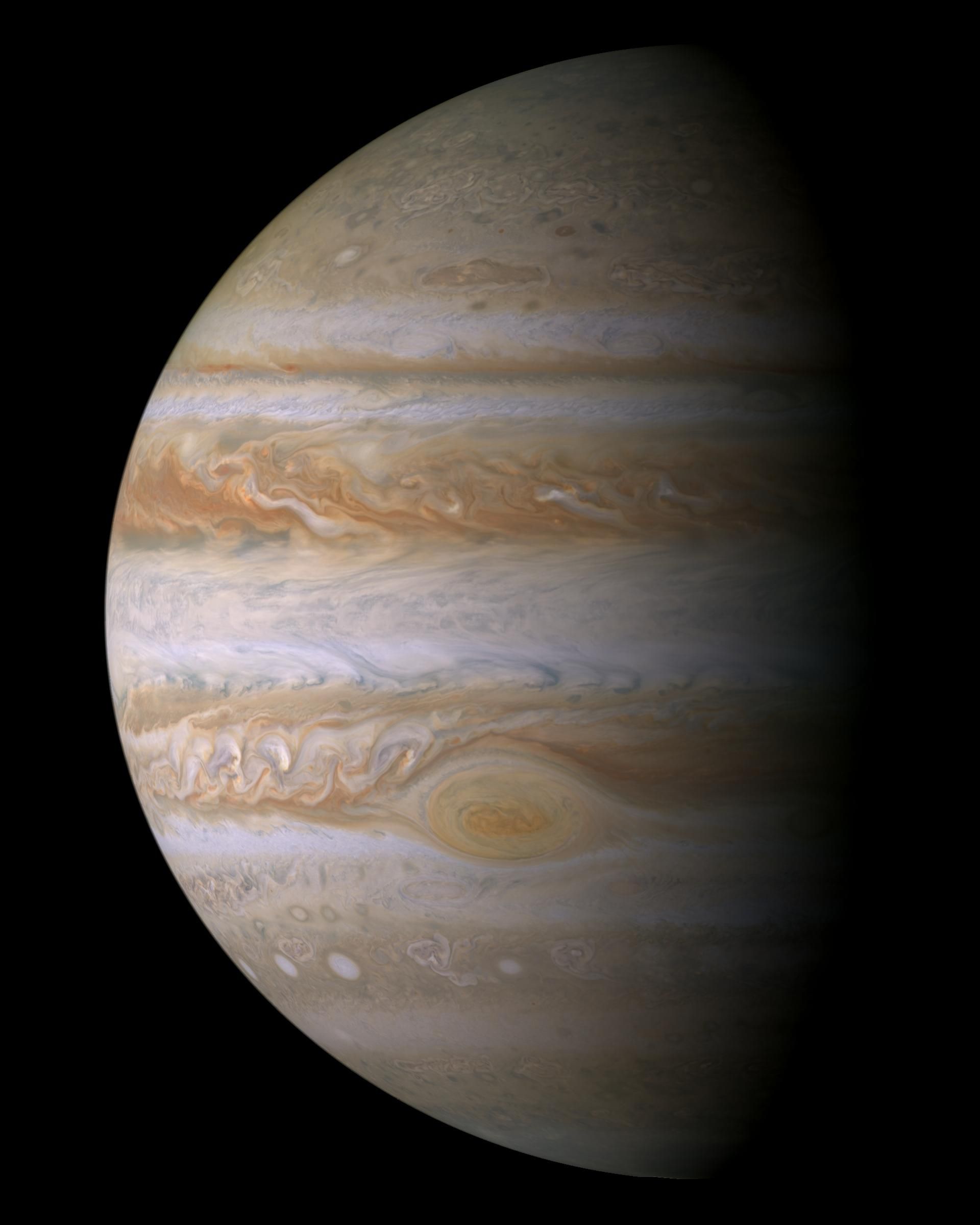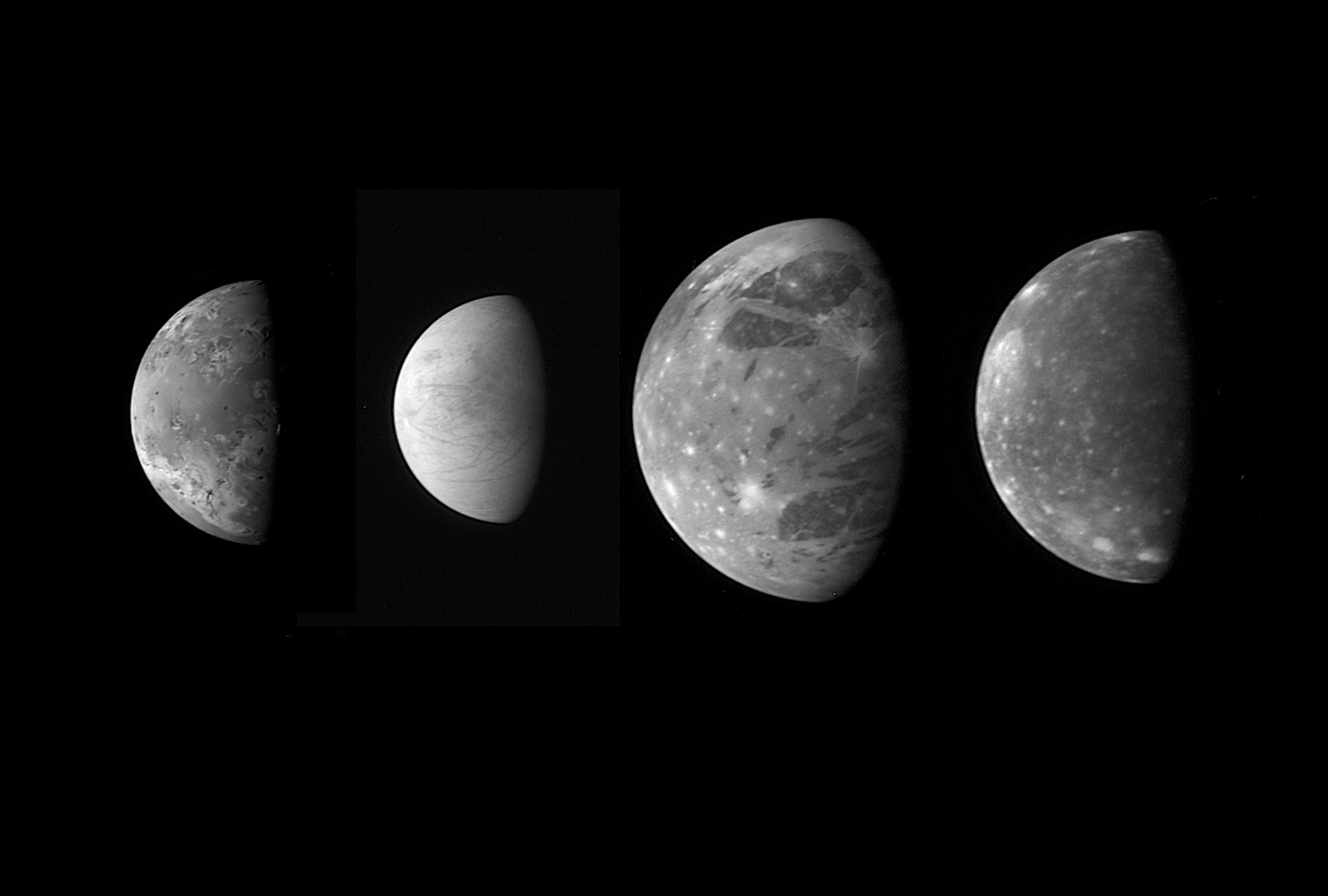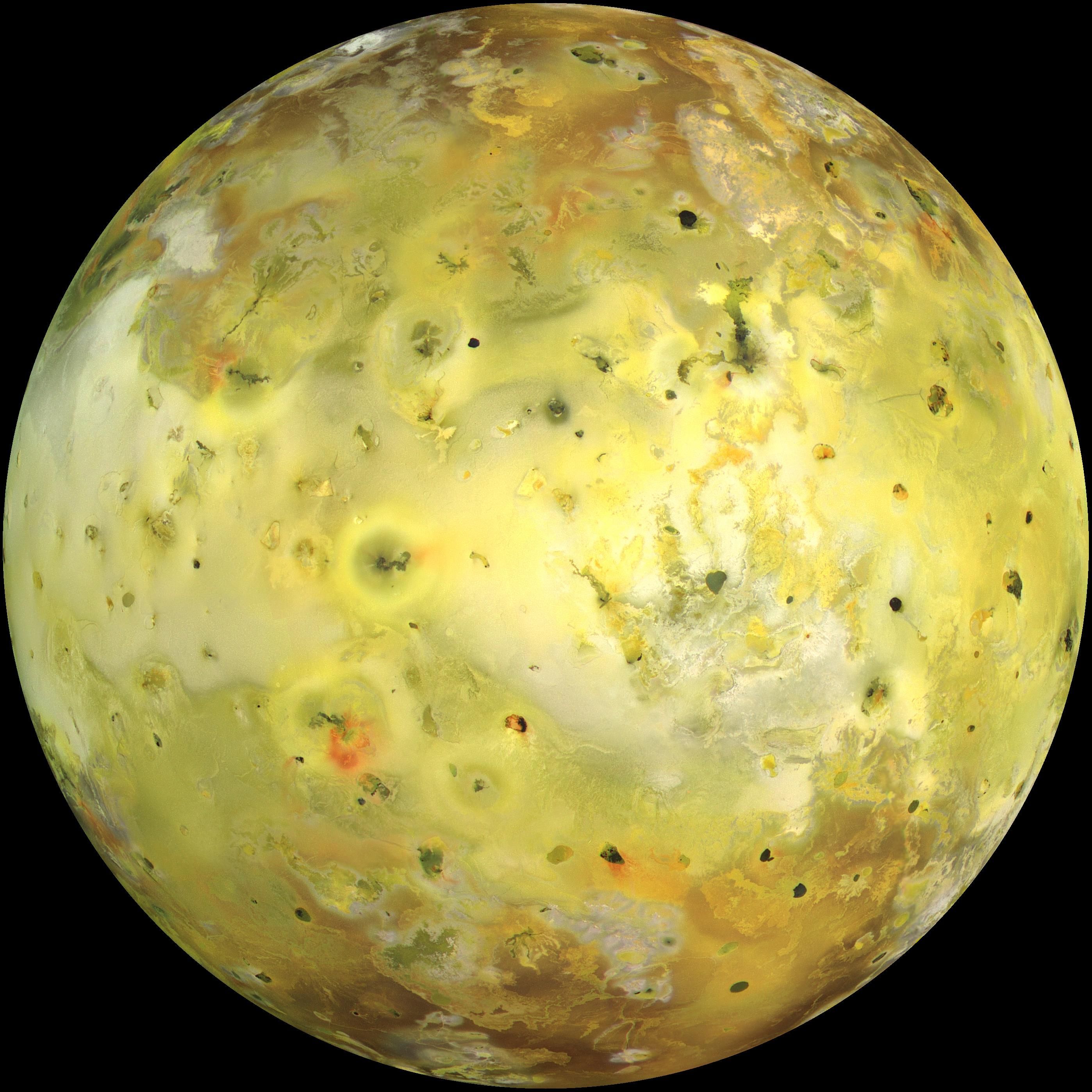Jupiter
Jupiter
The largest planet in our Solar System, with a radius ~11 times bigger than
the Earth (you can fit more than 1300 Earths inside Jupiter). Nearly constant
east-west winds blow at hundreds of miles per hour, and strong anticyclonic
storms, like the Great Red Spot, can last for centuries.

Credit: (NASA/JPL/Space Science Institute)
Due to its large mass, Jupiter is often used for "gravity assists" by spacecraft journeying to
the outer solar system.
Moons

Credit: (NASA/Johns Hopkins University Applied Physics Laboratory/Southwest Research Institute)

Credit: (NASA/JPL/University of Arizona)
Fun Facts
- Io is the most volcanically active body in the solar system
- Europa may have a subsurface ocean
- Ganymede is the largest moon in the solar system
- Callisto is about the size of Mercury and has a heavily cratered surface
- Faint rings, only visible under proper lighting conditions or at infrared wavelengths
- Jupiter has 51 named moons, and 16 unnamed moons, for a total of 67 moons and counting.
Missions
Pioneer 10: 1973 flyby
Pioneer 11: 1974 flyby
Voyager 1 and 2: 1979 flybys
Ulysses: 1992 and 2004 flybys
Galileo: 1995 to 2003 orbiter
Cassini: 2000 flyby
New Horizons: 2007 flyby
Juno: ~2016 orbiter
